| FUJITSU Alkaline Battery |
FUJITSU Carbon-Zinc Battery |
| Properly speaking, the Alkaline battery is called an Alkaline-Manganese
Dry Battery. It looks nearly the same as the conventional carbon-zinc battery
in shape and profile but its performance is vastly differernt; it can deliver
high-level power(up to seven time or more as large as thet of the manganese
battery) for many hours of continuous use with a small voltage drop. |
Made with manganese dioxide and zinc as prime materials, the carbon-zinc,
battery is one of the most widely used batteries. When a voltage drop begins
after hours of use, you can continue using the battery at a satisfactory
level of performance by letting it operate and rest at intervals. The battery
is suitable for use in a powerful light, a flash light, a calculator, etc. |
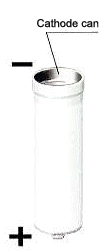 |
1 |
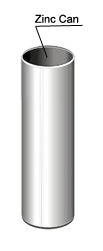 |
1 |
| Degreasing a cathode can |
ZINC CAN |
|
Any oil on a can are removed. This can functions as a positive electrode.
Therefore, materials must be put from the negativ side. |
A zinc can functions as both a container and anode material.
|
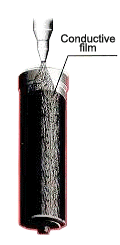 |
2 |
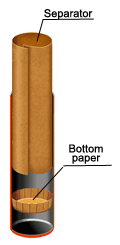 |
2 |
| Applying a conductive film |
Inserting a separator |
|
A conductive material, is sprayed to form a conductive film on the inside
surface of a cathode can for good electrical conductivity. |
A separator and a bottom paper are inserted to prevent short-circuit of
a positive and a negative electrode.
|
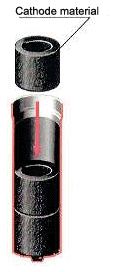 |
3 |
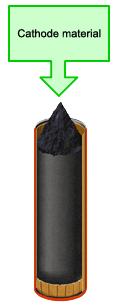 |
3 |
| Inserting cathode materials |
Filling cathode material |
|
Cathode materials, mixture of manganese dioxide, carbon and others as positive
electrode are inserted into a cathode can.
|
A mixture of manganese dioxide, electrolyte and others are filled as a
cathode material.
|
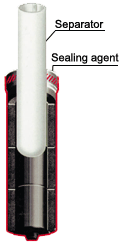 |
4 |
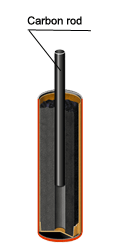 |
4 |
| Inserting a separator |
Inserting a carbon rod |
|
A separator is inserted to prevent short-circuit of a positive and a negative
electrode.
|
A carbon rod for collecting electricity is inserted into the center of
a Zinc can.
|
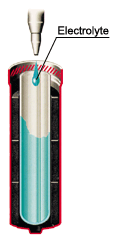 |
5 |
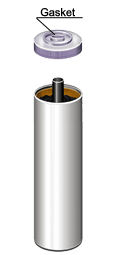 |
5 |
| Injecting electrolyte |
Sealing |
|
An electrolyte is injected into a separator to generate electricity.
|
A plastic gasket for sealing is fitted to prevent leakage and drying.
|
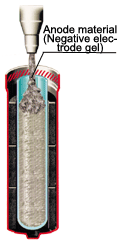 |
6 |
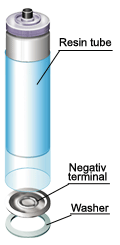 |
6 |
| Injecting anode gel |
Fitting a negative terminal and resin tube |
|
An anode gel of zinc particles and an alkaline solution is injected as
the material of a negative electrode.
|
A negative terminal and a washer are placed on the bottom of Zinc can and
shrinkbwrapped by resin tube.
|
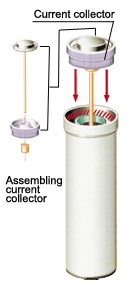 |
7 |
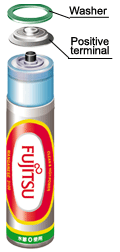 |
7 |
| Inserting a current collector |
Putting the terminal and metal jacket |
|
An assembled current collector is inserted from the negative electrode
side. This current collector functions as an anode terminal.
|
A positive terminal and a washer are placed on the top of battery and covered
by a metal jacket.
|
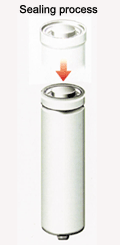 |
8 |
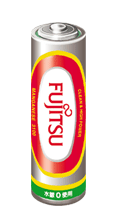 |
8 |
| Sealing |
Inspection |
|
A battery is sealed to prevent leakage and drying.
|
A battery is inspected on its voltage, current and appearance.
|
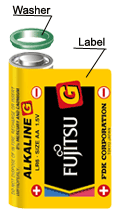 |
9 |
|
| Labeling |
|
A battery is affixed with a label.
|
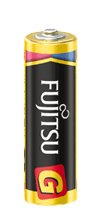 |
10 |
|
| Inspectipn |
|
A battery is inspected on its voltage, current and appearance.
|